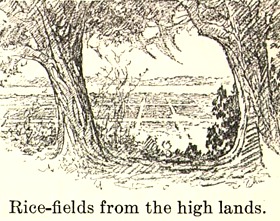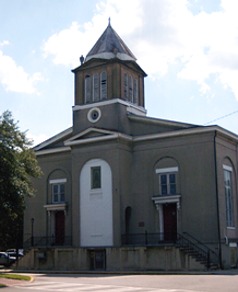


Beyond the Written Document: Looking for Africa in African American Culture
“Culture, this acted document. . . .” Clifford Geertz1
Historians have long revered and relied upon written documents to construct a narrative account of an event, a time, a people. They stand as authoritative evidence because they can be consulted, circulated, compared with, and corroborated by other written sources. Through mining textual evidence, historians invoke cultural worlds and open windows onto history. Yet how might one gain access to areas of the past where few documents exist? What if all the documents are written by—and from the perspective of—conquerors rather than by the people whose history you want to tell? Is it possible to use more eclectic forms of evidence? These are questions that historians confront when their use of documents is thwarted by the near absence of appropriate records.
A way into the void is to look for history by exploring many diverse kinds of objects and evidential forms, including but not limited to, written records. Things people make, landscapes they live in, stories and songs they pass on orally to later generations, even words they use—all of these can provide evidence of the worlds of the past. Despite the fragmented nature of such evidence and despite the bias of what has survived, we can use such materials along with written records to conjure the past. Culturally expressive forms—both cultural practices and material objects—can complement written records, offering perspectives lost in the records themselves. To use various forms of evidence moves our stories of the past from the words of those with control over the written word to larger spheres in which more kinds of people participated.
We often signal such larger spheres by speaking of culture. Literary scholar Raymond Williams explains, “Culture is ordinary.” Culture, Williams continues, is “a whole way of life.”2 This remarkably simple definition, through its breadth, provides a point of departure in our search for vestiges of the past. “Cultural history” has weaned historians from their dependence on the perspectives of the archive to expand what might count as historical evidence. In the search for cultures of the past, historians gather fragments of evidence—oral narratives, material objects, and traces of embodied practices that involve language, food cultivation, forest use, building, making, sacralizing, and forming relationships of all sorts. These shreds and shards extend what can be told about the past and enlarge the circle of historical subjects who we recognize as integral in making the past. A second step, however, is to work from these eclectic source materials to ask about the forms of coherence that might have tied these shreds and shards together. What social practices, meanings, and values are associated with the fragments we find today? Working across methods from anthropology and history, cultural historians have assembled the shards to explore the “whole way of life” of people in the past. This requires reconstructing the structure of social constraints and opportunities to consider how the “stuff” people left behind—whether documents or otherwise—was actually used.
The puzzles and challenges of cultural history have been particularly evident to scholars committed to investigate the life worlds and perspectives of the Africans who were brought to the Americas against their will within the institution of slavery. Enslaved Africans had very little ability to keep their own written records. There are documents about them, but they do not reflect the perspectives of the enslaved, and the written documents often obscure and erase the very things that may have been most important in their lives—their relationships, their skills, their forms of knowledge, their hopes and dreams. Under slave society, slaveholders wrote enslaved Africans out of history, inscribing the emerging contributions of varied American regions into the archives as if Africans were virtually absent. The ambition of contemporary cultural historians is to write against this erasure, showing the historical contributions and perspectives of enslaved Africans.
The southeast coast of United States is a particularly exciting place for this task. Enslaved Africans were able to form large communities in the coastal southeast. European American settlers retreated from the malaria that spread from parasites brought from Africa. Although European American slaveholders owned the land and controlled its use, due to the absence of large communities of European Americans, Africans were in more important roles, as farm supervisors, landscape engineers, and community leaders than in other areas of the United States. The cultural worlds of slaves in this area, then, are particularly vivid and impressive. But documents cannot be our only source of evidence for understanding these worlds. We need many sources.
Picture the floor of the First African Baptist Church in Savannah, Georgia. Small holes have been carved in its wide boards; together they form an intricate aesthetic pattern. It turns out that the pattern is a Congolese spiritual design. Contemporary church officials suggest that the floor’s design was created by enslaved parishioners. Perhaps the pattern was both a source of delight and a signal. Furthermore, the holes served more than aesthetic and communicative purposes. Escaped slaves, reportedly, were able to hide under the floor of the church; the holes allowed them air and light.
|
|
Similarly, what should we make of the following? At an excavation site in an old plantation house in Houston, Texas, archaeologists found what appeared to be a completely random collection of objects, a “seashell, beads, doll parts, chalk, bird skulls bottles and bird skulls, bottles, and bases of cast iron cooking pots” all found in a corner of a dwelling that once served as the quarters of an enslaved family.3 The archaeologists consulted studies from West Africa that revealed similar collections among ritual specialists of the Yoruba. The array was not random at all, but evidence of an active African ritual life! Such shards of evidence expand the collection of historical materials that contribute to a sense of the past. (For more on interpreting plantation artifacts, see the results of archaeological research at Ashland-Belle Helene Plantation in Louisiana.)
 Rice field dyke in South Carolina. |
|
 Rice field dyke in Gambia, 2009. |
|
 From A Woman Rice Planter, by Elizabeth Waties Allston Pringle (1914). |
|
 Praise house. |
|
Such differences among African American communities sparked a sharp debate in the twentieth century about the extent to which slaves were able to carry their African heritage to the New World. Some scholars claimed that the experience of slavery wiped out any significant influence of Africa; others argued that African retentions remained key to emerging African American communities. Anthropologists Sidney Mintz and Richard Price helped to resolve this issue by explaining that cultural historians should begin with attention to the social constraints and opportunities of slaves, as these varied in different regions, as a basis to consider just how “African” the cultural forms they adopted might be. Rather than merely collecting bits of African culture in the Americas, or, alternatively, denying that any influence exists, they showed how cultural historians might reconstruct the social worlds of enslaved Africans as a basis for considering their forms of cultural communication and commitment. As in creole languages, enslaved Africans did use their African heritage, but, Mintz and Price showed, they also formed something new, something American, in the process of negotiating their new lives. Elements of African heritage became the basis of emergent new African American cultures.6
As historians learn to use new forms of evidence, we also learn new ways to reconstruct the social and cultural worlds of the past. African Americans of the past speak to our times as we assemble not just the many forms of evidence they have left us but also their creative endeavors to forge new systems of sociality and meaning despite the terrors of slavery.
Guiding Student Activities and Discussion
(1) Reading clues: Students may want to become “detectives” gathering clues about the histories of their ancestors and neighbors.
First, you may want to discuss how historians have used fragmented clues to study the past. Consider the examples above. How did linguist Patricia Jones-Jackson look for clues in language? How did geographer Judith Carney use the landscape itself as a set of clues to understand the past? You might invite your students to interpret the landscape of Green Hill plantation in Virginia through the photos available in the National Humanities Center toolbox The Making of African American Identity, Vol. I: 1500-1865.
Second, you may want to propose student projects to try this themselves. Two models come to mind. You could bring some fragments of a past social world (photos, everyday tools, items of clothing, religious paraphernalia) into class and ask students to imagine what those fragments might mean. Alternatively, you might ask the students to gather some evidence themselves. Students might work in teams, each of which could focus on a particular social and cultural community from a particular period. Some of the students could collect objects that relate to this community. Some might also interview an elderly person from that community. Each student should keep a record of the process of discovery, a “field journal” detailing what clues were discovered, and, in the case of an interview, what the process of selecting the person, getting permission, and talking to the person was like. What issues came up in the process itself? How are they putting clues together? The team could organize a poster presenting the social world of that community, in the period of time they have chosen, and the clues they used to learn about it. Or the team might create a 5-minute i-movie to present the project.
(2) Learning to honor the cultural and regional diversity of the past: Africans were just one group to arrive in the United States without the opportunity to document their own histories. Consider other subaltern groups and what kinds of cultural artifacts might generate a sense of the importance of their cultures. Not all these groups are organized around ethnicity or race; one might consider the histories of children or refugees, for example. How might an historical account generated from non-written sources tell a story?
Students might use the case of African American culture in the southeast coast of the United States to discuss the role of U.S. cultural and regional diversity more generally. What specific conditions allowed the southeast coast to develop such a rich African heritage? How might Africans in other areas have contributed to regional cultures and histories? Students might consider their home area: What kinds of cultural heritage are gathered together there? What specific features of the history of their area shaped the form of the mix?
Scholars Write
“The African Antecedents of Uncle Ben in U.S. Rice History” (2003) by Judith Carney will give you the opportunity to hook your students into this topic through the advertising icon “Uncle Ben,” whose smiling face may very well peer at them from their cupboard shelves. Carney’s essay, a distillation of the argument she makes in her book Black Rice, illustrates the significance of rice cultivation as a skill that traveled with enslaved people from Africa. The piece will bring nuance and complexity to what students generally learn about slavery.
The Birth of African American Culture (1992) by Sidney Mintz and Richard Price is a classic work on the topic of cultural retentions and continuity. It integrates the concept of culture into history and demonstrates how it is a dynamic force in the lives of African Americans and not merely something confined to museums.
You can illustrate points made by Mintz and Price by assigning your students essays from Sea Island Roots: African Presence in the Carolinas and Georgia (1991) edited by Mary Arnold Twining and Keith E. Baird. Written in an accessible style, this collection is valuable to general readers as well as scholars. It demonstrates how folkways and various cultural practices reinforce a sense of a group’ collective identity. Many of the essays raise important examples of things that people pull together as evidence of cultural transmission.
1 Clifford Geertz, "Thick Description," in Interpretation of Cultures (New York: Basic Books, 1977), 3-30.
2 Raymond Williams, Keywords, revised edition (New York: Oxford University Press, 1983), 87-93.
3 Patricia Samford, "The Archaeology of African-American Slavery and Material Culture," William and Mary Quarterly, 53.1 (1996): 87-114.
4 Judith A. Carney, Black Rice: The African Origins of Rice Cultivation in the Americas (Cambridge, MA: Harvard University Press, 2002).
5 Patricia Jones-Jackson, When Roots Die: Endangered Traditions on the Sea Islands Athens (GA: University of Georgia Press, 1987).
6 Sidney W. Mintz and Richard Price, Birth of African American Culture: An Anthropological Perspective (Boston: Beacon Press, 1992 [1976]).

NHC Home | TeacherServe | Divining America | Nature Transformed | Freedom’s Story
About Us | Site Guide | Contact | Search


